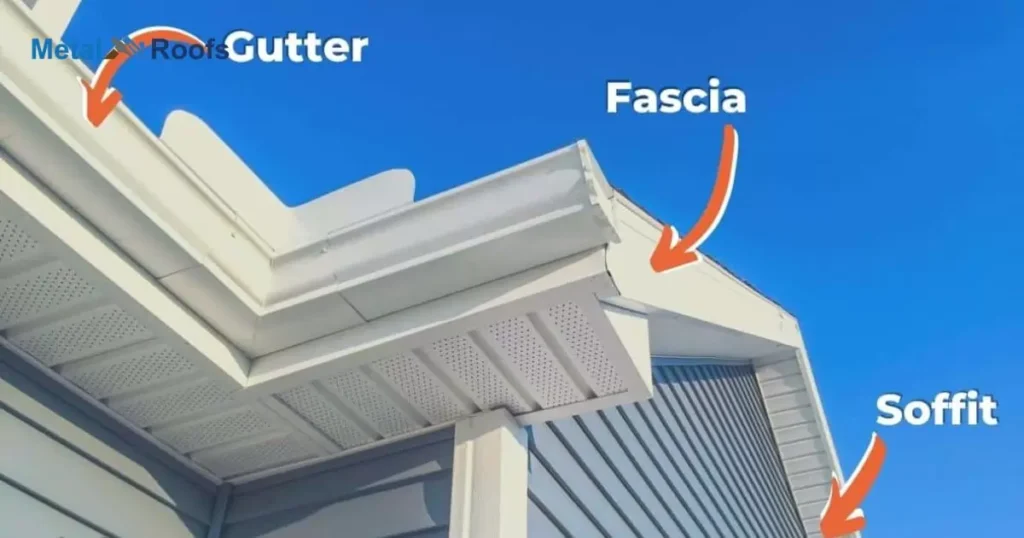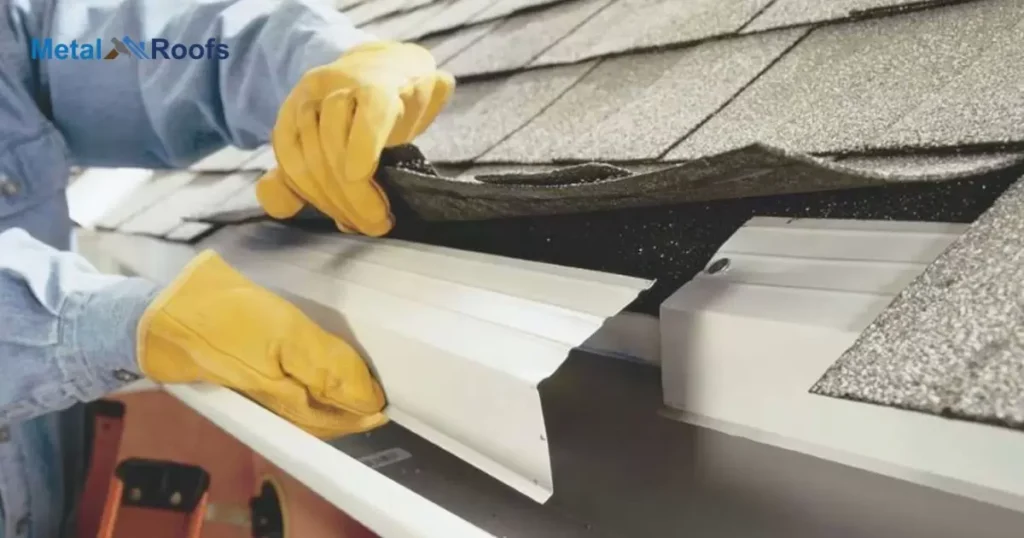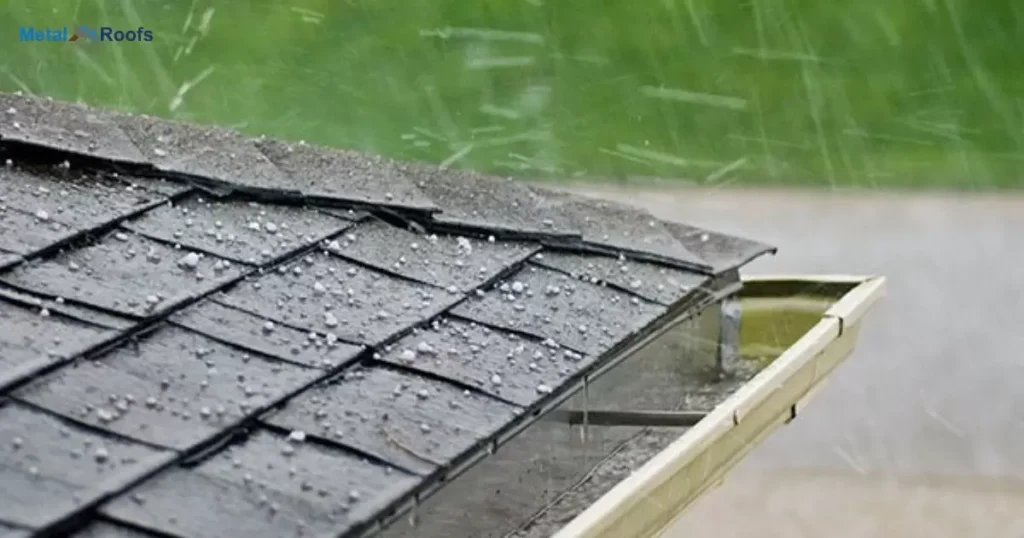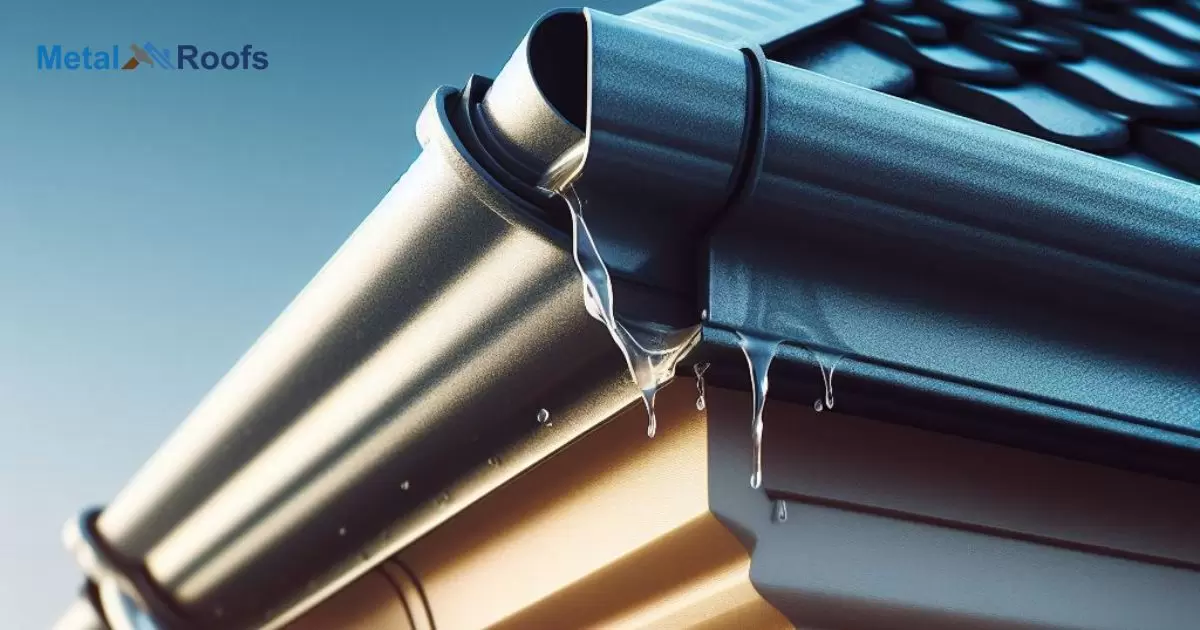The drip edge is installed along the roof edge to direct water into the gutter; it should overlap the gutter slightly but not touch, leaving a gap that allows water to drip off freely without pooling or backing up behind the drip edge.
Proper drainage is key for a roof’s longevity. The drip edge and gutter work together to achieve this. A gap between them allows water to freely fall into the gutter. Clogs cause leakage and rot. The gap size matters.
The Metal Roof Affect Wifi drip edge overhangs the edge of the roof. It routes runoff water into the gutter system. The gap allows dripping without pooling. Too small of a gap causes backup. Too large allows leakage behind the drip edge. Optimal size is crucial.
Key Takeaways
- Maintain a proper overhang of the drip edge to direct water into the gutter.
- Ensure a small gap between the roof and fascia for effective water drainage.
- Regularly inspect and maintain the drip edge to prevent potential water damage.
- Follow manufacturer guidelines for installation to optimize the roofing and gutter system.
Purpose Of Drip Edge In Metal Roofing
| Purpose Of Drip Edge In Metal Roofing |
| Purpose |
| Direct water away from roof edge |
| Protective barrier |
| Facilitates efficient water flow |
| Maintains roofing structure integrity |
| Prevents potential water-related issues |
The drip edge in metal roofing serves a crucial purpose by directing water away from the roof edge. It provides a protective barrier, preventing water from seeping behind the gutter and causing damage to the fascia and soffit.
Maintaining a proper overhang of the drip edge into the gutter, typically around 1/4 to 3/8 inch, is essential for efficient water flow and preventing water-related issues. If you notice the gutter pulling away from the house, address this promptly to avoid further damage and ensure proper drainage.
Causes of Gap Between Drip Edge and Gutter

The gap between the drip edge and the gutter, typically 1/4 to 3/8 inch, directs water into the gutter, protecting the fascia. Proper installation, sealing, and regular maintenance are vital to prevent water damage and ensure effective drainage.
Improper Installation Of Drip Edge
Improper drip edge installation risks water damage. A too-small gap may divert water behind gutters, harming the roof and fascia. To prevent gutters coming loose from house, follow guidelines for overhang and sealing to ensure an effective drainage system.
Gutter Not Level Or Has Shifted Over Time
A tilted or shifted gutter can impede water flow, causing pooling and potential leaks. Regular inspections and adjustments are crucial for maintaining an effective gutter system and preventing structural damage over time.
Back Flowing Gutters
When gutters become clogged, water can start to backflow. This can happen when leaves, debris, or ice block the normal flow. Backflow may damage the roof, fascia, and even the foundation. Regular gutter maintenance is crucial to prevent such issues and ensure proper water drainage.
Consequences Of Gap Between Drip Edge And Gutter
A proper 1/4 to 3/8 inch overhang of the drip edge into the gutter is crucial for effective water drainage. This prevents water from damaging the fascia and soffit. Regular maintenance and sealing are necessary to avoid potential structural issues.
Water Damage To Home
The drip edge plays a crucial role in preventing water damage to the home. It should have a proper overhang, directing water into the gutter and away from the fascia. Regular maintenance, including checking the gap between the drip edge and gutter, is essential to avoid potential issues like rotting wood and foundation damage.
Prolonged Lifespan Of Roof
A well-installed drip edge with the right gap extends the lifespan of a roof by directing water away from the fascia. Ensuring a proper connection prevents water damage, contributing to the overall durability of the roofing system. Regular maintenance, including checking this gap, is key for long-term roof health.
Gap Between Drip Edge And Fascia

The gap between the drip edge and fascia is critical for preventing water damage. A proper overhang of about 1/4 to 3/8 inch ensures water drips into the gutter, safeguarding the fascia and soffit.
Maintaining this gap allows for smooth water flow into the gutter, preventing issues like wood rot or foundation damage. Regular checks and proper sealing ensure the drip edge functions effectively in directing water away from vulnerable areas.
How to Fix the Gap Between Drip Edge and Gutter?
To fix the gap between the drip edge and gutter, check for proper alignment, ensuring a 1/4 to 3/8 inch overhang. Adjust the drip edge if necessary and seal any gaps to prevent water damage. Regular maintenance is key to a well-functioning roofing and drainage system.
Address The Issue As Soon As Possible
Address the issue as soon as possible. Ensure the drip edge overhangs into the gutter by about 1/4 to 3/8 inch. This prevents water damage and ensures proper water flow into the gutter system.
Possible Solutions For The Gap
Ensure a 1/4 to 3/8 inch overhang for the drip edge to guide water into the gutter. Regular inspections and adjustments maintain proper alignment. Apply sealant along the joint for effective water diversion and to prevent potential damage.
Correct Installation Of Drip Edge
Properly install the drip edge with a 1/4 to 3/8 inch overhang for effective water flow into the gutter. Adhere to manufacturer guidelines, seal gaps tightly, and conduct regular maintenance to prevent water damage and ensure optimal performance.
Install Flashing Behind The Drip Edge And Over The Back Edge Of The Gutter
To enhance water protection, it’s crucial to install flashing behind the drip edge. This ensures a tight seal and prevents water from seeping behind the gutter. Extending the flashing over the back edge of the gutter further safeguards against potential water damage to the fascia and soffit.
Replace The Gutter
Replace the gutter if it shows signs of rust, leaks, or sagging. Choose a style that complements your home and install it correctly. Regular maintenance ensures the longevity and effectiveness of the new gutter system.
Add A Gap Between The Fascia Board And The Drip Edge
Establishing a 1/4 to 3/8 inch gap between the fascia board and the drip edge is essential. This gap facilitates effective water drainage, preventing damage to the fascia. It ensures a proper overhang, directing water into the gutter for optimal roof protection.
Drip Edge Flashing
The drip edge flashing is a key element in roofing, safeguarding the roof edges from water damage. Placed along the perimeter, it directs water into the gutter, preventing seepage behind and ensuring efficient drainage.
Maintaining a recommended overhang of 1/4 to 3/8 inch, the gap between drip edge and gutter is crucial for optimal water flow. Regular upkeep and adherence to installation guidelines help create a tight seal, averting problems like wood rot and foundation damage.
Drip Edge Installed Wrong

Improperly installed drip edges can lead to water damage. If the drip edge is positioned too far from the gutter, water may bypass the intended drainage path, causing potential issues like fascia rot.
Ensuring a correct overhang and alignment is crucial for the effective functioning of the roofing and gutter system.
Gutters Cleaning
Keeping your gutters clean is essential for preventing water damage to your home. Clogged gutters can lead to overflowing water, which may seep into your walls and foundation. Regular cleaning, especially in fall and spring, ensures proper drainage and prevents costly repairs.
First, clear out debris like leaves and twigs by hand or with a scoop. Next, flush the gutters with a garden hose to remove finer particles and check for any blockages. Finally, inspect the downspouts to ensure water flows freely away from your home. By maintaining clean gutters, you protect your property from potential water-related issues.
Gutter Drip Edge
The gutter drip edge is a crucial part of roof construction. It helps water flow into the gutters, preventing leaks. Installed along the roof edge, it guides water away from the fascia and prevents wood rot.
This protective barrier ensures rainwater does not damage the structure. It also enhances the longevity of the roof and prevents water damage to the building’s foundation. Regular maintenance ensures its effectiveness in managing water runoff.
Rain Gutter Drip Edge

A rain gutter drip edge is a vital part of your roofing system. It helps direct rainwater away from your home’s foundation. This prevents water damage and keeps your basement dry. The drip edge also protects the edge of your roof from rotting and extends its lifespan.
It’s typically made of metal and installed under the shingles. This ensures water flows into the gutter, not behind it. Keeping your gutter and drip edge clean is important for proper water flow. Regular maintenance helps prevent clogs and potential water damage to your home.
Frequently Asked Questions
How do you stop water leaks between drip edge and gutters?
Ensure a snug fit by sealing the gap with weather-resistant caulk, and regularly inspect for any signs of wear or damage.
How do you fix a gap between fascia and gutters?
Use sealant to close the gap between fascia and gutters, ensuring a water-tight seal. Consider adding flashing for a more permanent solution.
Should there be a gap between roof and fascia?
Yes, a small gap is recommended between the roof and fascia to accommodate the drip edge, ensuring proper water drainage and preventing potential damage.
Conclusion
The gap size depends on factors like climate and roof type. Typically 1/2 to 1 inch is recommended. Flashings help reduce leaks. Test water flow during rains. Adjust the gap as needed for proper drainage.
Inspect the drip edge gap over time. Debris may fall and clog it. Ensure water flows freely. Rot starts small but spreads. Catch issues early. Proper installation prevents problems. Maintain your roof and gutter system.











